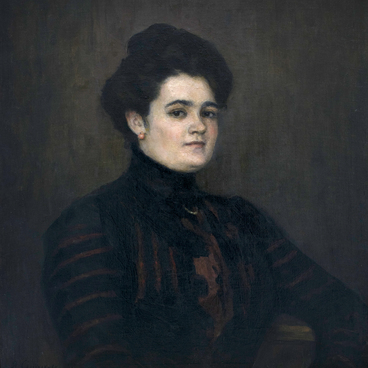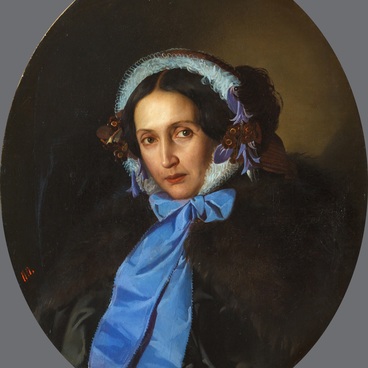The permanent display at our museum starts with the ceremonial portrait of the first Russian emperor, Peter I. It is a half-length image of a young man in armour, with a three-quarter view of Peter’s head and body. He is shown with dark, wavy hair, thick eyebrows and a dark moustache. His forehead is not covered, and his dark eyes are directed at the viewer. The face is rosy. His left side is adorned with the Order of St. Andrew the First-Called, with the order’s light blue sash over his right shoulder. The neck is decorated with a white scarf.
Russia experienced a major transformation in the 18th century started by Peter I himself. The country gained access to the seas, and its industries and trade were growing. In 1721 the country was proclaimed an empire. Arts and sciences were flourishing, and secular art gained presence along with the traditional icon-painting. Thanks to the first Russian emperor’s reforms in the early 18th century, a variety of forms and genres of secular art started to develop, including in particular portraits. Extensive cultural development was associated with the stronger nobility and a more prominent role of an individual in the society. Art patronage and collecting gained momentum.
Quite a few known Russian painters were educated at the Imperial Academy of Arts which was established with the Senate’s decree in 1757, the idea promoted by Shouvalov and Lomonosov. The Academy taught the established canons derived from the studies of the great classical masters of the ancient times and the Italian Renaissance.
Throughout the 18th century there was a widespread practice of repetition of images recognized as ‘canonical’. You are looking at the portrait of Peter I masterfully executed by an unknown Russian artist. This is a version of the well-known two-thirds-length portrait of Peter I in armour by Jean-Marc Nattier (1685-1766) painted in 1717 in Paris, now in the State Hermitage Museum. In the original painting, Peter is shown against the background of the Poltava battle scene holding the marshal’s baton in his left hand. In the work of the Russian master, Peter I is presented against a neutral dark background, and his pose, armour and the St. Andrew’s Order with its sash are identical to Nattier’s painting.
Not that many lifetime portraits of the first Russian emperor survived, most of them done by foreign painters. There were nine types of images repeated and replicated later, already after Peter’s death, to decorate palaces and public places.
This portrait was acquired by the Generations Foundation in 1996 at the Christie’s auction in London. In 2011 it was transferred to the Khanty-Mansiysk State Museum of Fine Arts.



